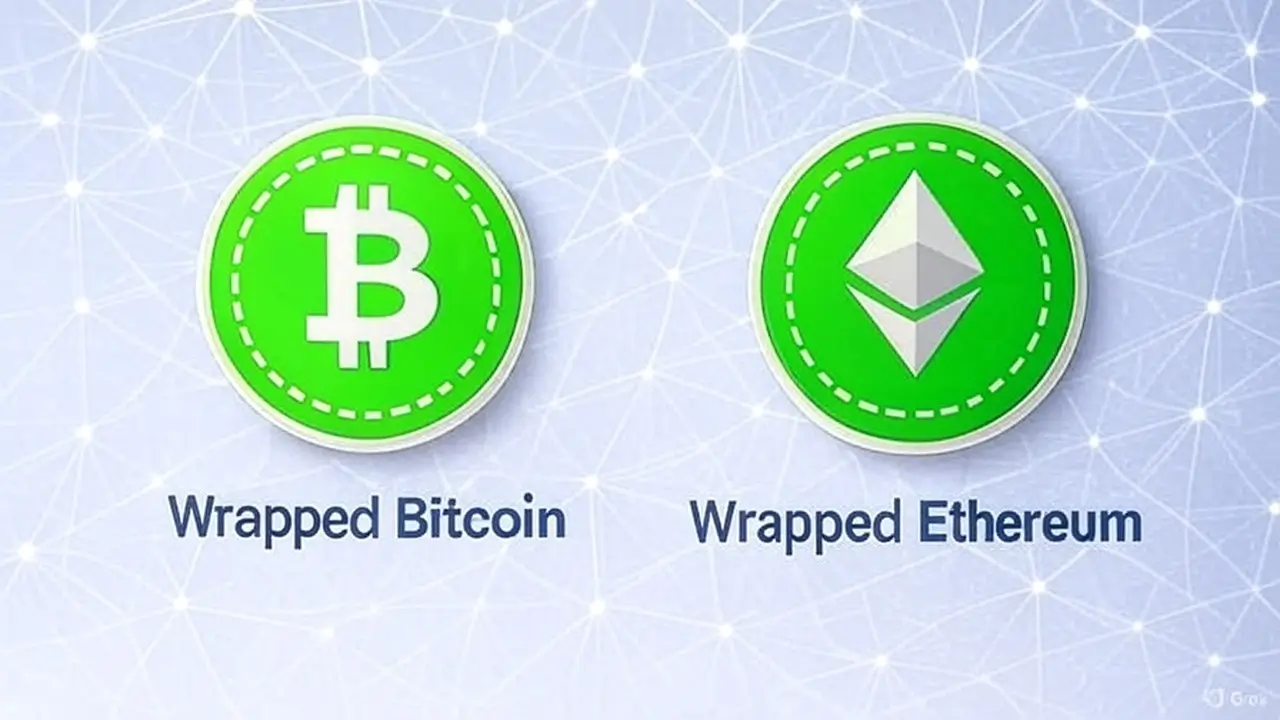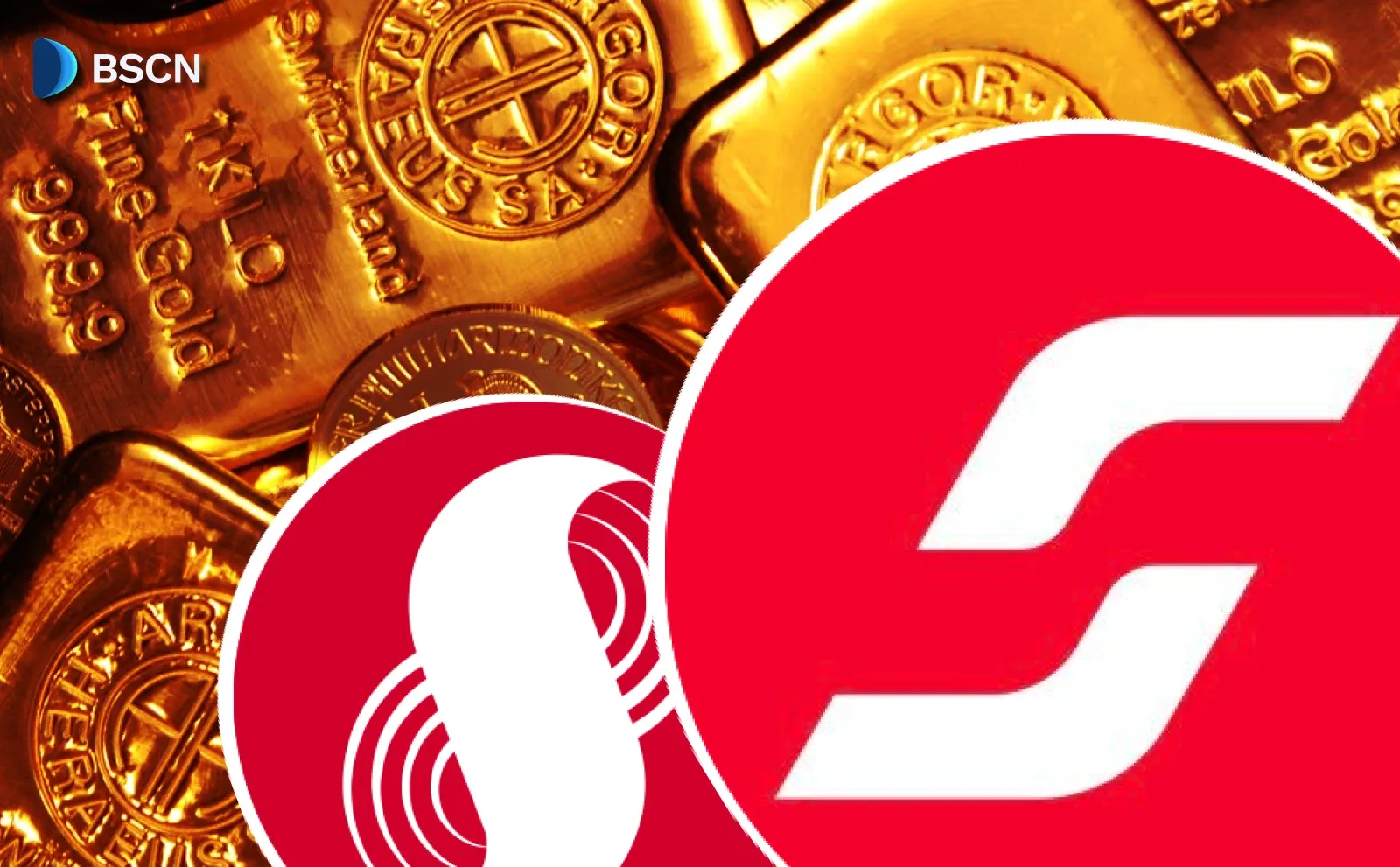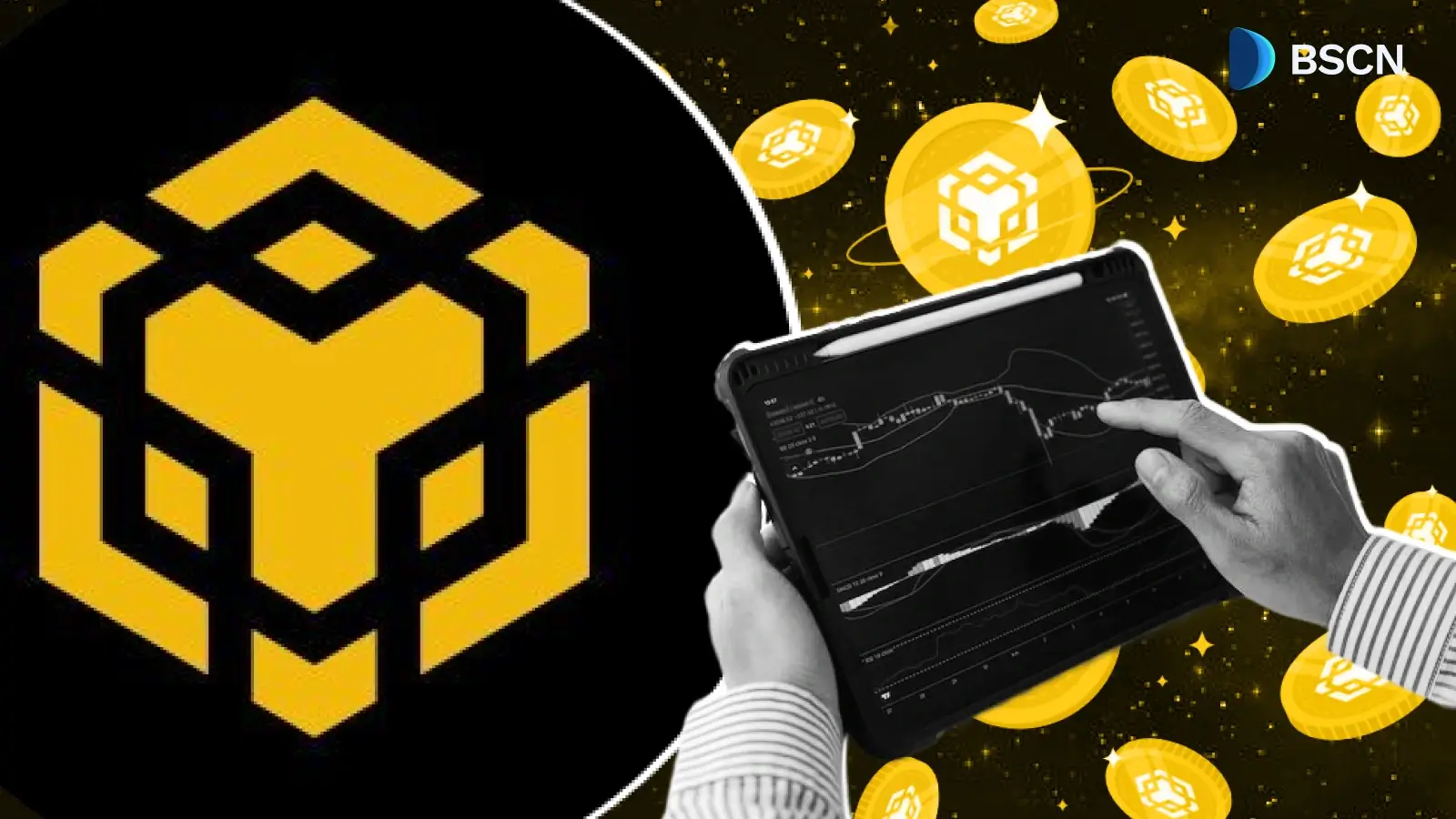Deepdive
(Advertisement)
What Are Wrapped Tokens?

Wrapped tokens enable cryptocurrency to move between blockchains. Learn how WBTC, wETH work, their benefits, and risks in DeFi ecosystems.
Crypto Rich
January 26, 2021
(Advertisement)
Table of Contents
Last revision: October 10, 2025
Wrapped tokens are cryptocurrency versions of an asset that exist on a different blockchain than the original. They maintain a 1:1 value ratio with what they represent. Think of them as passport stamps for cryptocurrency. Your passport lets you travel between countries, and wrapped tokens let digital assets move between blockchains that otherwise can't communicate.
The wrapped token market has grown to over $85 billion in market capitalization. These tokens now power a significant portion of decentralized finance activity across multiple blockchain networks.
Why Do Wrapped Tokens Exist?
Different blockchains operate as separate systems with distinct protocols and standards. Bitcoin can't natively interact with Ethereum. Solana applications can't directly access assets from Polygon. This isolation creates friction for anyone wanting to use holdings across different platforms.
Wrapping solves the interoperability problem. The process creates compatible versions of assets on non-native blockchains. A custodian locks the original cryptocurrency in a digital vault. Meanwhile, an equivalent amount mints on the destination network.
The Technical Barrier
Blockchain networks use different consensus mechanisms, programming languages, and token standards. Bitcoin uses the UTXO model while Ethereum relies on an account-based system. These fundamental differences prevent direct asset transfers between chains.
Consider someone holding Bitcoin who wants to participate in Ethereum's DeFi protocols. They face a choice: sell Bitcoin for Ethereum-native assets or keep it locked on its original chain. Wrapped tokens offer a third option that preserves Bitcoin exposure while enabling access to Ethereum's ecosystem.
How Do Wrapped Tokens Work?
The wrapping process involves three key participants: users, service providers (who facilitate wrapping), and custodians. Newer implementations use smart contracts to automate everything without human intermediaries.
The Minting Process
Here's the basic flow. Someone sends their original cryptocurrency to a custodian who locks it in reserve. The custodian then mints an equivalent amount on the destination blockchain. Send 1 Bitcoin, and you get 1 Wrapped Bitcoin. The locked assets stay in custody as collateral. This backing ensures the value peg holds. On-chain proof systems let anyone verify the exact collateral amount.
The Burning Process
Converting back to the original form requires burning. The holder sends wrapped tokens to the custodian. The custodian destroys them and releases the equivalent amount of original cryptocurrency from reserves. This two-way mechanism maintains supply balance. If 127,000 Wrapped Bitcoin tokens exist, exactly 127,000 Bitcoin must be held in custody.
What Are Common Examples of Wrapped Tokens?
Wrapped Bitcoin dominates by market capitalization. Approximately 127,000 WBTC tokens exist with a combined value exceeding $15.5 billion.
Wrapped Bitcoin (WBTC)
WBTC launched in 2019 as an ERC-20 token on Ethereum. ERC-20 is Ethereum's standard for creating tokens that work seamlessly with most applications on the network. BitGo serves as the primary custodian, holding Bitcoin reserves that back each WBTC. The WBTC DAO governs the protocol with over 30 member organizations, including MakerDAO and Gnosis.
People deploy WBTC across Ethereum's DeFi ecosystem. Common uses include:
- Providing liquidity on decentralized exchanges like Uniswap and Curve
- Using Bitcoin as collateral for loans on Aave and Compound
- Earning yield through various farming strategies on platforms like Yearn Finance
- Trading Bitcoin exposure without leaving the Ethereum ecosystem
Wrapped Ether (wETH)
Ethereum's native currency predates the ERC-20 standard that most Ethereum applications use. Many decentralized applications and smart contracts only interact with ERC-20 tokens, creating compatibility issues for ETH itself.
Wrapped Ether converts ETH into an ERC-20 compliant format, letting it function seamlessly with protocols requiring standardized interfaces. With approximately 2.4 million wETH in circulation and a market cap of around $10 billion, it represents significant DeFi integration. You'll frequently encounter wETH on NFT marketplaces and decentralized exchanges.

Cross-Chain Wrapped Tokens
Networks beyond Ethereum now host wrapped versions of major cryptocurrencies. Solana has emerged as a significant destination for WBTC, with growing adoption for DeFi applications. BNB Chain, Polygon, Avalanche, and Arbitrum all support their own wrapping standards. Each blockchain implements wrapping through its own token format. Ethereum uses ERC-20, BNB Chain uses BEP-20, and Solana uses its native token program. The fundamental concept stays consistent across implementations.
What Are the Benefits of Using Wrapped Tokens?
These tokens expand the utility of cryptocurrency holdings without requiring sales of original assets. A Bitcoin holder can access Ethereum-based lending protocols while keeping their Bitcoin price exposure intact.
Increased Liquidity
Wrapping brings liquidity from major cryptocurrencies into ecosystems where those assets can't natively exist. The $15 billion in Wrapped Bitcoin on Ethereum represents Bitcoin capital that can now participate in Ethereum DeFi markets. This liquidity benefits both individuals and protocols. Traders gain access to more trading pairs and investment opportunities. Protocols get deeper liquidity pools, which improve trading efficiency and reduce slippage.
Access to DeFi Protocols
Decentralized finance applications concentrate heavily on certain blockchains. Ethereum hosts the majority of established protocols despite higher transaction costs. Wrapping lets people from other chains access these applications. Bitcoin holders can supply WBTC as collateral on lending platforms, provide liquidity to automated market makers, participate in yield farming strategies, and trade on decentralized exchanges. These activities generate returns on otherwise idle Bitcoin holdings.
Lower Transaction Costs
Some implementations reduce costs by relocating assets to chains with lower transaction fees. Wrapping Ethereum assets onto Layer 2 networks or alternative Layer 1 chains can significantly reduce gas costs. The trade-off involves balancing wrapping fees against potential savings from using cheaper networks. The break-even point depends on transaction frequency and the specific chains involved.
What Risks Do Wrapped Tokens Carry?
These tokens introduce centralization and trust requirements into otherwise decentralized systems. Understanding the risks helps people decide when and how to use wrapped assets.
Custodial Risk
Most wrapped tokens rely on custodians to hold reserve assets. A custodian facing bankruptcy, hack, or regulatory action could leave holders unable to access the underlying collateral. The 2022 FTX collapse demonstrated this risk when wrapped tokens created by the exchange became difficult to redeem. BitGo, mentioned earlier as WBTC's custodian, maintains strong security practices and regular audits. Holders still accept counterparty risk by trusting a centralized entity.
Smart Contract Vulnerabilities
Implementations using smart contracts for custody face technical vulnerabilities. Bugs in contract code could let attackers drain reserves or mint unauthorized tokens. Several DeFi bridges have suffered exploits resulting in millions of dollars in losses. Projects typically conduct security audits before launch, but audits can't guarantee complete safety. Research the security track record of any wrapped token implementation before use.
Price Deviation and Market Risks
The tokens should maintain exact parity with their underlying assets. Extreme market volatility can create temporary price discrepancies. High demand to wrap or unwrap assets during volatile periods may cause premiums or discounts. These deviations typically resolve through arbitrage trading. Converting large amounts during stress periods may result in unfavorable prices.
Key risks to consider:
- Custodial failure through bankruptcy, hack, or regulatory seizure
- Smart contract bugs that could drain reserves or enable unauthorized minting
- Temporary price deviations during high volatility periods
- Regulatory uncertainty around wrapped token classification and requirements
Wrapped tokens exist in an unclear regulatory environment. Questions persist about whether they constitute securities, how custodians should be regulated, and what disclosure requirements apply. Regulatory developments could impact operations.
How Do Wrapped Tokens Differ From Stablecoins?
Both represent other assets, but they use different collateralization approaches. Wrapped tokens maintain 1:1 on-chain backing with verifiable reserves. Stablecoins like USDT use mixed reserves including cash, loans, and other assets.
Key Differences
Wrapped Bitcoin requires exactly 1 Bitcoin in custody for every 1 WBTC in circulation. Tether maintains reserves that approximately equal USDT supply but relies on diverse asset types rather than pure fiat currency backing.
Verification methods also differ. Reserves for wrapped versions exist on public blockchains where anyone can check collateral levels. Stablecoin reserves require audits or attestations from external firms to verify backing claims.
What Role Do DAOs Play in Wrapped Token Governance?
Decentralized autonomous organizations govern some implementations. The WBTC DAO votes on adding or removing custodians and service providers, updating smart contracts, and making other protocol changes.
DAO governance attempts to decentralize control and reduce single points of failure. Members include established DeFi protocols and organizations with reputations to protect.
Critics note that DAOs still rely on multisig wallets controlled by specific individuals. True decentralization remains difficult when physical asset custody requires trusted entities.
Are There Fully Decentralized Alternatives?
Newer cross-chain solutions attempt to eliminate custodial requirements entirely. These systems use cryptographic proofs and validator networks to verify transactions across chains without central authorities.
Emerging Technologies
Layer zero protocols, bridges with distributed validator sets, and atomic swap technologies represent efforts to create trustless alternatives. These solutions trade custodial risk for technical complexity and sometimes slower transaction finality.
Popular decentralized bridging approaches include:
- Layer zero protocols that use lightweight verification methods
- Bridges with distributed validator networks replacing single custodians
- Atomic swap technologies enabling peer-to-peer cross-chain exchanges
- Hash time-locked contracts for trustless token swaps
No solution has yet matched the scale and liquidity of established options like WBTC. Development continues as projects work to balance decentralization, security, and user experience.
What Does the Future Hold for Wrapped Tokens?
These assets have become infrastructure for multi-chain cryptocurrency activity. The multi-billion dollar market shows sustained demand for cross-chain asset movement.
Technical improvements continue to reduce costs and increase security. New wrapping standards emerge on additional blockchains. Integration with tokenized real-world assets could expand the use cases of wrapping beyond pure cryptocurrency. Regulatory clarity may provide more certainty for custodians and participants. Competition from alternative bridging solutions will likely pressure the space to improve efficiency and reduce trust requirements.
Sources
- Robinhood Learn: What Are Wrapped Tokens?
- CoinGecko: Wrapped-Tokens Market Data.
- Kraken Learn Center: What Are Wrapped Crypto Assets.
- CoinMarketCap: Wrapped Bitcoin Price Data.
- 1inch Network: Wrapped Tokens as Blockchain Limitation Disruptors.
Read Next...
Frequently Asked Questions
Can I lose money if I hold wrapped tokens?
Yes. Wrapped tokens carry custodial risk if the entity holding reserves faces bankruptcy or hacks. Price volatility affects wrapped tokens identically to their underlying assets. Smart contract vulnerabilities could also result in losses.
How do I convert regular cryptocurrency into wrapped tokens?
Most centralized exchanges list wrapped tokens for direct purchase. Decentralized exchanges allow swapping between assets and their wrapped versions. Some platforms offer dedicated wrapping interfaces that handle the conversion process automatically through smart contracts.
Do wrapped tokens always maintain the same price as the original asset?
Wrapped tokens aim for 1:1 price parity but may trade at slight premiums or discounts during extreme market volatility. Arbitrage traders typically eliminate significant price gaps quickly. Long-term deviation indicates potential problems with the wrapping mechanism.
Are wrapped tokens considered different assets for tax purposes?
Tax treatment varies by jurisdiction and remains unclear in many regions. Some tax authorities may view wrapping as a taxable swap between different assets. Others consider wrapped tokens equivalent to their underlying assets. Consult a tax professional familiar with cryptocurrency regulations in your location.
Disclaimer
Disclaimer: The views expressed in this article do not necessarily represent the views of BSCN. The information provided in this article is for educational and entertainment purposes only and should not be construed as investment advice, or advice of any kind. BSCN assumes no responsibility for any investment decisions made based on the information provided in this article. If you believe that the article should be amended, please reach out to the BSCN team by emailing [email protected].
Author
 Crypto Rich
Crypto RichRich has been researching cryptocurrency and blockchain technology for eight years and has served as a senior analyst at BSCN since its founding in 2020. He focuses on fundamental analysis of early-stage crypto projects and tokens and has published in-depth research reports on over 200 emerging protocols. Rich also writes about broader technology and scientific trends and maintains active involvement in the crypto community through X/Twitter Spaces, and leading industry events.
(Advertisement)
Latest News
(Advertisement)
Crypto Project & Token Reviews
Project & Token Reviews
Comprehensive reviews of crypto's most interesting projects and assets
Learn about the hottest projects & tokens

















